Drepung Monastery: A Pilgrimage Destination for Seekers of Peace and Wisdom
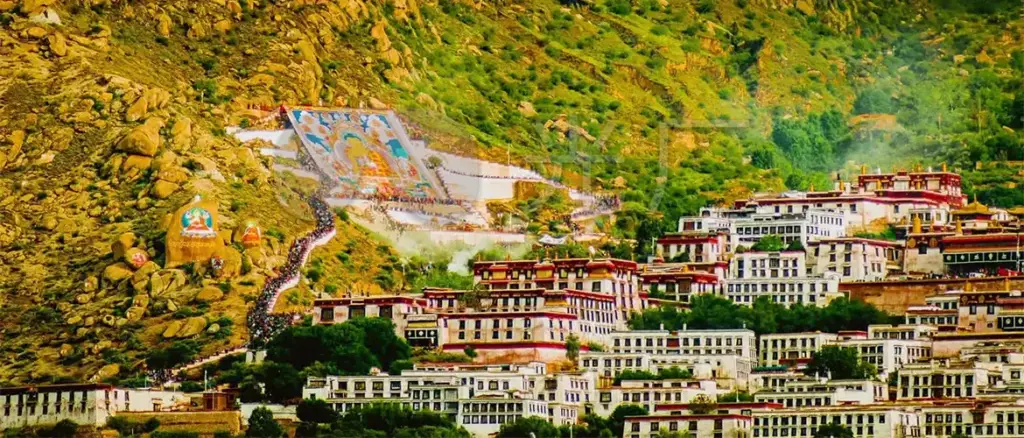
An Essential Guide to Visiting Drepung Monastery
Nestled at the foot of the majestic Gambo Utse Mountain, Drepung Monastery stands as a monumental testament to Tibetan Buddhism and culture. As the largest monastery in Lhasa and one of the three great Gelug monasteries, Drepung offers visitors a rare glimpse into the spiritual heart of Tibet. With its sprawling complex of whitewashed buildings that evoke images of a mountain of rice, this sacred site is steeped in history, having once housed thousands of monks and served as the political and spiritual home of the Dalai Lamas until the 17th century.
Exploring Drepung Monastery is not just a journey through architectural splendor; it is an invitation to delve into the rich tapestry of Tibetan traditions and practices. From the stunning Coqen Hall, adorned with intricate statues and ancient scriptures, to the serene kora path that encircles the monastery, each corner reveals a unique aspect of Buddhist life. Here, amid the echo of chanting monks and the flutter of prayer flags, you can witness lively debates on profound philosophical concepts and partake in vibrant festivals that celebrate centuries-old customs.
Whether you are a spiritual seeker, a history enthusiast, or simply an adventurous traveler, Drepung Monastery promises an unforgettable experience that resonates with the spirit of Tibet. Join us as we guide you through the essential elements of visiting this remarkable sanctuary, ensuring that your journey is as enlightening as it is extraordinary.
In This Guide
- An Essential Guide to Visiting Drepung Monastery
- The Rich History and Legends of Drepung Monastery
- Main Highlights: What You Absolutely Can’t Miss
- Planning Your Visit: A Practical Guide
- Tickets: Prices, Booking, and Tips
- How to Get There: A Complete Transportation Guide
- Local Cuisine and Accommodation Nearby
- Frequently Asked Questions
- Final Thoughts on Your Trip
The Rich History and Legends of Drepung Monastery
Drepung Monastery is a monumental jewel in the crown of Tibetan Buddhism, steeped in history and rich with legends. Founded in 1416 by Jamyang Choge Tashi Palden, a dedicated disciple of Je Tsongkhapa—the revered teacher and founder of the Gelug School—Drepung’s name translates to “collecting rice,” reminiscent of a mound of rice seen from afar. Nestled at the foot of Gambo Utse Mountain, this monastery soon established itself as the largest in Tibet and one of the Great Three Gelug Monasteries, alongside Sera and Ganden, drawing thousands of monks and scholars to its hallowed halls.
As the principal seat of the Gelug School, Drepung became synonymous with high academic standards and spiritual enlightenment. Its reputation as a premier Buddhist university earned it the moniker “Nalanda of Tibet,” likening it to the renowned monastic university in India known for its scholarly excellence. For over 400 years, Drepung flourished, nurturing some of the greatest Buddhist minds and shaping the course of Tibetan Buddhism through its four main colleges: Loseling, Gomang, Deyang, and Ngagpa.
The monastery also played a pivotal role in the lives of the Dalai Lamas. Initially, it served as their residence until the mid-17th century when the seat of the Dalai Lama was transferred to the majestic Potala Palace. The Ganden Palace (Ganden Phodrang), built under the direction of the second Dalai Lama, Gendun Gyaco, remains a significant site within Drepung, embodying the intertwining of political and spiritual authority.
The rich tapestry of Drepung’s history is interwoven with captivating legends and traditions. One of the most celebrated events is the Shoton Festival, a vibrant celebration that marks the end of the monks’ meditation period. This festival has evolved from a simple yogurt offering to a grand spectacle featuring the unfurling of a massive thangka, drawing thousands of devotees eager to pay homage and seek blessings.
Moreover, the lively debates held in the monastery’s courtyards are a testament to the intellectual vibrancy that characterizes Drepung. Here, monks engage in spirited discussions, using dynamic gestures to convey their arguments—a vivid display of the monastery’s commitment to the pursuit of knowledge and understanding.
Today, as visitors stroll through its expansive grounds, they can feel the echoes of history reverberating through the air. From its origins as a humble monastic community to its status as a cornerstone of Tibetan culture, Drepung Monastery stands as a living testament to the enduring legacy of Tibetan Buddhism, inviting travelers from around the world to explore its storied past and vibrant present.
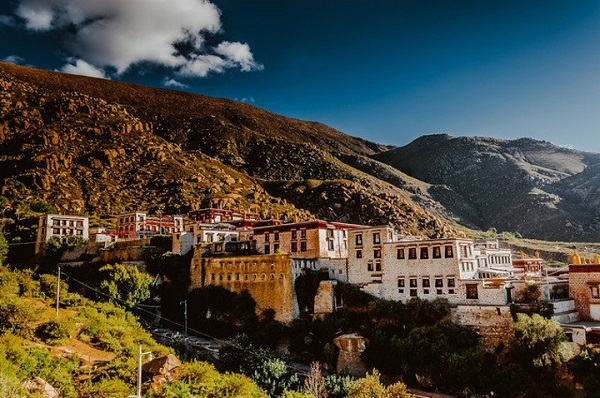
Drepung Monastery.
Main Highlights: What You Absolutely Can’t Miss
Drepung Monastery, perched at the foot of Gambo Utse Mountain and just a stone’s throw from Lhasa, is not just a religious site; it’s a treasure trove of Tibetan culture and history. As the largest monastery of the Gelug School of Tibetan Buddhism, it beckons travelers with its unique architecture, rich heritage, and vibrant traditions. Here’s a curated list of must-see highlights that will ensure you experience the essence of Drepung Monastery.
The Ganden Palace (Ganden Phodrang)
Step into the historical heart of Drepung by visiting the Ganden Palace, once the residence of several Dalai Lamas. Built in the 16th century, this majestic structure offers a glimpse into the lives of Tibet’s spiritual leaders. The intricate designs and serene atmosphere make it a perfect spot for reflection.
Coqen Hall (Tsokchen Lhakhang)
Known as the main assembly hall, Coqen Hall is an architectural marvel. With 183 stone pillars supporting its vast expanse of 1,850 square meters, this hall is adorned with exquisite Buddha statues and ancient scriptures. Don’t miss the spectacular statue of the Qamba Buddha, believed to be around 500 years old, housed on the third floor—a true highlight for any visitor.
The Four Great Colleges (Dratsangs)
Drepung is home to four major colleges, each with its own unique character and history. The Drepung Loseling Dratsang is the largest, famous for its scripture hall filled with ancient texts. The Gomang Dratsang, while smaller, is renowned for the quality of its teachings. The Deyang Dratsang may be the least expansive, but its students excel in their studies. Finally, the Ngagpa Dratsang focuses on Tantric Buddhism, showcasing vibrant murals that illustrate its mystical practices.
The Shoton Festival
If you’re fortunate enough to visit during the summer, the Shoton Festival—a grand celebration in Drepung—should not be missed. Originally an offering of yogurt to monks concluding a period of meditation, the festival has transformed into a vibrant event featuring the unfurling of a massive thangka painting. Witness thousands of devotees gathering for this breathtaking ceremony, where prayers and offerings fill the air with a sense of spirituality and joy.
Drepung Kora
For those seeking a more immersive experience, embark on the Drepung Kora, a pilgrimage route that offers stunning views of the monastery and surrounding landscape. This relatively easy trek, which climbs to about 3,900 meters, is adorned with colorful prayer flags and sacred carvings along the way. As you stroll, take time to appreciate the serene ambiance and the devotion of local pilgrims.
Buddhist Debates
Immerse yourself in the lively atmosphere of Buddhist debates, a fascinating tradition at Drepung. Watch as monks engage in passionate discussions about Buddhist philosophy and teachings, using expressive gestures and clapping to emphasize their points. These debates are not just educational; they are a vibrant display of Tibetan culture in action.
Architectural Wonders
Drepung Monastery itself is a feast for the eyes. Its layout resembles a mandala, with the main halls and chapels radiating from the central pagodas. As you wander through the monastery, marvel at the striking white buildings that stand out against the backdrop of the rugged mountains.
Conclusion
Drepung Monastery is a must-visit for anyone traveling to Lhasa. With its rich history, stunning architecture, and vibrant cultural practices, it offers an unparalleled glimpse into Tibetan Buddhism. Whether you are tracing the footsteps of the Dalai Lamas, witnessing a thangka unveiling, or simply enjoying the serene landscape, Drepung will leave an indelible mark on your Tibetan adventure.
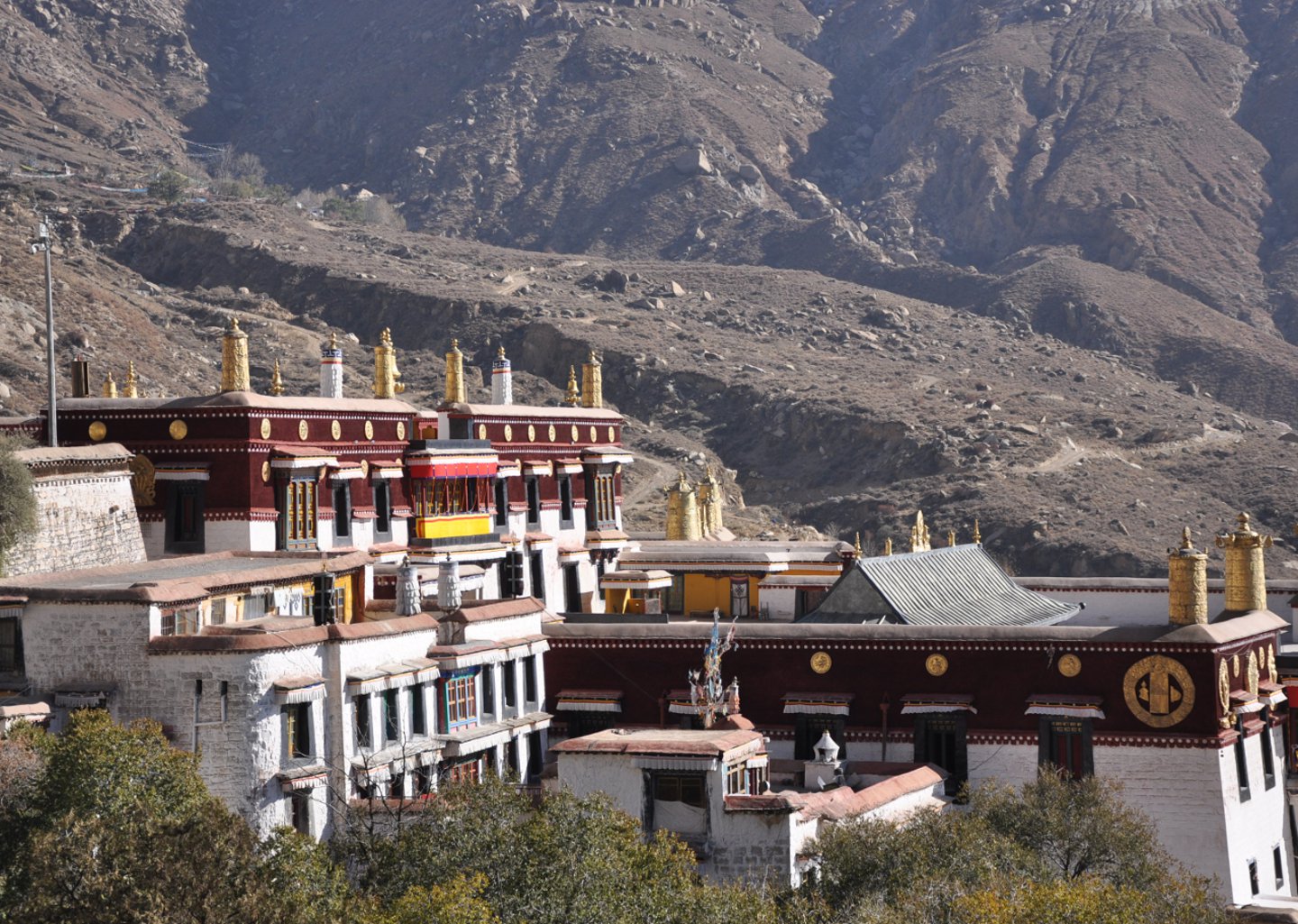
Drepung Monastery.
Planning Your Visit: A Practical Guide
Essential Information for Your Visit to Drepung Monastery
Drepung Monastery, the largest Tibetan monastery in Lhasa, is a must-see for anyone interested in Tibetan culture, spirituality, and stunning architecture. Situated at the foot of Gambo Utse Mountain, just a short distance from downtown Lhasa, this remarkable site is steeped in history and offers visitors a profound glimpse into the heritage of Tibetan Buddhism. Here’s everything you need to know to make the most of your visit.
Getting There
Location: Drepung Monastery is located approximately 5 kilometers west of Lhasa city center.
Transportation Options:
– Taxi: The most convenient way to reach Drepung is by taxi. Fares from downtown Lhasa typically range from 20 to 40 RMB.
– Public Bus: Local buses (routes 1 and 2) also service the monastery. This is a budget-friendly option, costing around 1 RMB, but be prepared for a less direct route and potential crowding.
– Guided Tour: Many travelers opt for guided tours that include transportation, which can provide enriched context about the monastery’s significance.
Best Time to Visit
Drepung Monastery can be enjoyed year-round, but the ideal times to visit are during the shoulder seasons of spring (April to June) and autumn (September to October). During these months, the weather is generally mild, and the tourist crowds are thinner, allowing for a more peaceful experience.
If you’re interested in local culture, consider timing your visit to coincide with the Drepung Shoton Festival, typically held in August, where you can witness the grand thangka unfurling ceremony.
Admission Fees
While entry fees can vary, they are generally around 40 RMB. Be sure to carry some cash, as not all places accept cards.
Exploring the Monastery
Key Attractions
- Ganden Phodrang: Once the residence of the Dalai Lamas, this majestic palace is a highlight of the monastery.
- Coqen Hall: The main assembly hall featuring stunning Buddha statues and an impressive collection of Buddhist texts.
- Four Colleges (Dratsangs): Explore the unique features of each college, which focus on different aspects of Tibetan Buddhism.
Guided Tours
Consider joining a guided tour to gain deeper insights into the monastery’s history and architecture. Many local guides can provide fascinating stories about the practices and teachings that still take place here.
Cultural Etiquette
- Dress Appropriately: As a religious site, modest clothing is encouraged. Avoid shorts and sleeveless tops.
- Photography: While you can take photos in many areas, always ask for permission before photographing monks or ritual activities.
- Respect Local Customs: Follow the lead of local pilgrims, especially during prayer or ceremonies. It’s customary to walk clockwise around sacred sites.
Tips for a Memorable Visit
- Acclimatization: Given Lhasa’s high altitude (approximately 3,650 meters), ensure you allow time to acclimatize to avoid altitude sickness.
- Stay Hydrated: Drink plenty of water throughout your visit, especially if you plan to hike the Drepung Kora, a scenic pilgrimage route around the monastery.
- Plan for Weather: The weather can change rapidly. Bring layers, sunscreen, and a hat, especially if you are visiting in summer.
- Engage with Monks: If opportunities arise, engage with monks and ask questions about their practices. Many are open to sharing their knowledge and experiences.
Conclusion
A visit to Drepung Monastery is not just a journey into Tibetan Buddhism but also an exploration of a place that has shaped the spiritual landscape of Tibet for centuries. With its breathtaking architecture, rich history, and vibrant cultural practices, you are sure to leave with a deeper understanding and appreciation of this iconic site. Whether you are a history buff, a spiritual seeker, or simply a curious traveler, Drepung Monastery provides an enriching experience that is not to be missed.
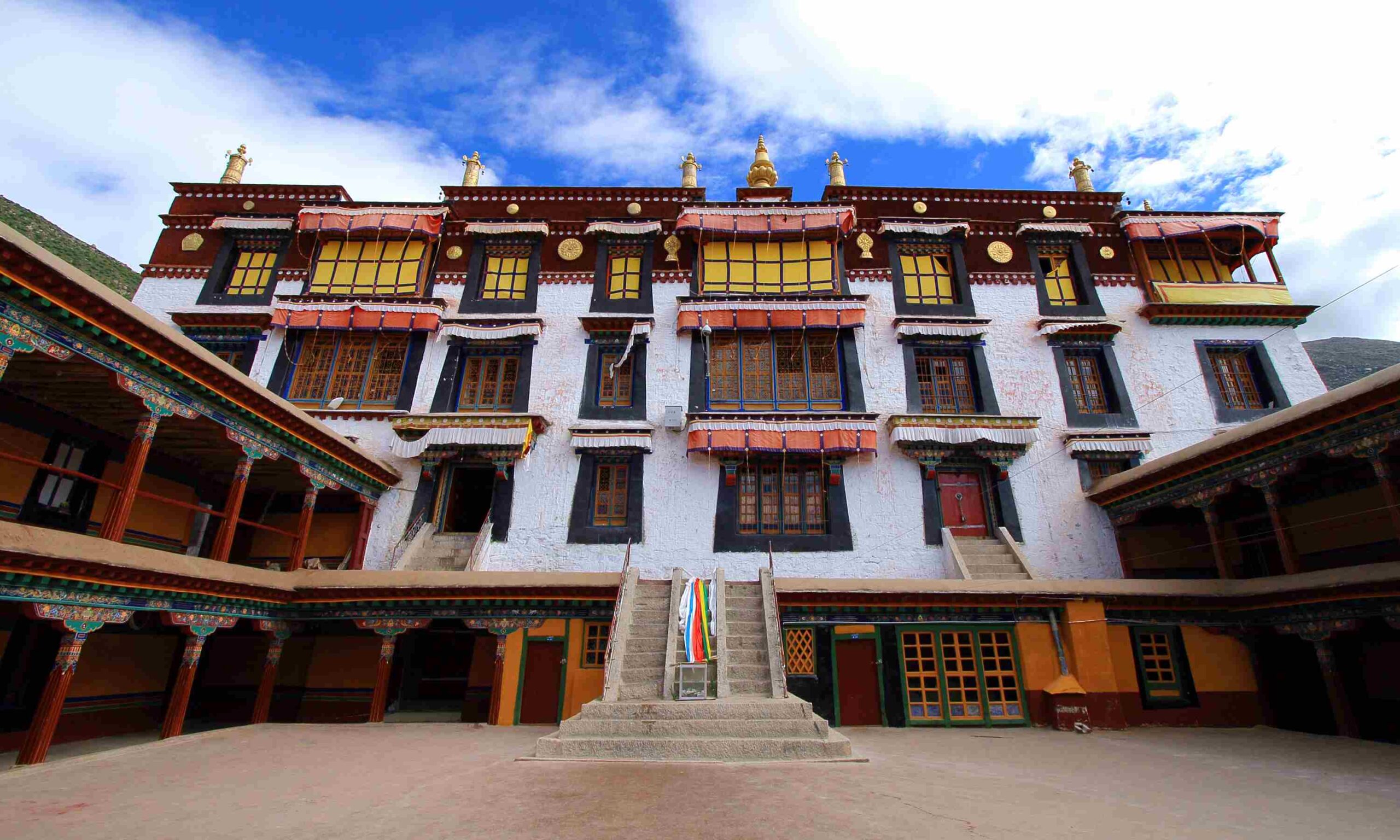
Drepung Monastery.
Tickets: Prices, Booking, and Tips
Visiting Drepung Monastery is a remarkable experience that allows you to immerse yourself in the rich heritage of Tibetan Buddhism. To make the most of your visit, here’s everything you need to know about ticket prices, booking, and some helpful tips.
Ticket Prices
As of 2023, the entrance fee for Drepung Monastery is approximately ¥50 (Chinese Yuan) per person. The ticket grants you access to the main areas of the monastery, allowing you to explore its stunning architecture and historical significance. Be sure to keep your ticket on hand, as you may need to show it at various checkpoints within the monastery grounds.
Booking Tickets
You can purchase your tickets directly at the entrance of Drepung Monastery. There’s no need for advance booking, making it convenient for spontaneous travelers. However, during peak tourist seasons, it’s advisable to arrive early in the day to avoid long lines and ensure that you have ample time to explore the site.
Guided Tours
For a more enriching experience, consider joining a guided tour. Many local tour operators offer packages that include transportation and a knowledgeable guide who can share insights into the monastery’s history and its architectural marvels. These guided tours often range from ¥200 to ¥500, depending on the inclusions, such as transport and meals.
Tips for a Great Visit
- Best Time to Visit: While the monastery is open year-round, the shoulder seasons of spring (April to June) and autumn (September to October) are ideal for pleasant weather and fewer crowds.
- Dress Code: As a sacred site, visitors are encouraged to dress modestly. Comfortable shoes are also recommended, as you will be walking and climbing in some areas.
- Acclimatization: If you’re coming from lower altitudes, ensure you acclimatize properly to Lhasa’s high elevation (around 3,650 meters) before your visit to avoid altitude sickness.
- Photography: Always ask for permission before taking photos of monks or inside sacred spaces. Respect local customs and practices.
- Plan for the Kora: If you’re up for it, consider doing the Drepung Kora, a pilgrimage circuit around the monastery. It offers breathtaking views and a unique perspective on the monastery’s spiritual significance.
By keeping these tips in mind and understanding the ticketing process, you can enhance your visit to Drepung Monastery, ensuring a memorable experience steeped in the culture and spirituality of Tibet.
How to Get There: A Complete Transportation Guide
Getting to Drepung Monastery is a rewarding experience that combines the charm of local transportation with breathtaking views of the Tibetan landscape. Here’s how to navigate your way to this iconic site located just outside Lhasa.
From Lhasa to Drepung Monastery
1. By Taxi:
The most convenient way to reach Drepung Monastery from downtown Lhasa is by taxi. The ride typically takes about 15-20 minutes and costs between 20-40 RMB (approximately 3-6 USD), depending on traffic and your starting point in the city. Taxis are readily available throughout Lhasa, and you can easily flag one down or use a ride-hailing app if you have local SIM access.
2. By Bus:
For a more budget-friendly option, you can take public transportation. Bus lines 2 and 3 run from various points in Lhasa to Drepung Monastery. Look for the bus stop near the Jokhang Temple or Barkhor Street, where you can hop on either line. The bus ride will take approximately 30-40 minutes, and the fare is very economical at just a few RMB. Be sure to check the latest schedules as they can vary.
3. Guided Tours:
Many travelers opt for guided tours that include transportation to Drepung Monastery. These tours often provide additional context about the monastery’s history and significance, enhancing your experience. Various tour operators in Lhasa offer packages that combine visits to Drepung, Sera Monastery, and other cultural sites, making it a hassle-free way to explore the region.
4. Bicycle Rental:
For the adventurous soul, renting a bicycle is a fantastic way to enjoy the scenic route to Drepung Monastery. Several rental shops in Lhasa offer bikes for a day. The ride is about 5 kilometers and will take you through peaceful streets, allowing you to soak in the local atmosphere. Just be mindful of the altitude and take your time.
5. Walking:
If you are feeling particularly energetic and acclimatized to the altitude, you could also walk to Drepung Monastery. The trek from central Lhasa to the monastery takes about an hour and offers stunning views of the surrounding mountains. This option is perfect for those who wish to experience the landscape up close, but ensure you wear comfortable shoes and stay hydrated.
Important Tips
-
Altitude Consideration: Drepung Monastery is located at an altitude of approximately 3,800 meters (12,467 feet). If you’re new to high altitudes, it’s wise to acclimatize in Lhasa for a few days before your visit.
-
Timing Your Visit: It’s best to visit during the morning when the monastery is less crowded. Additionally, the light is beautiful for photography, especially as the sun rises over the Gambo Utse Mountain.
-
Dress Appropriately: The weather in Lhasa can change quickly, so dress in layers. It’s advisable to wear comfortable shoes, especially if you plan to explore the kora (pilgrimage circuit) around the monastery.
-
Respect Local Customs: As you visit the monastery, be respectful of the local practices. This includes refraining from taking photographs in certain areas and observing the etiquette during prayer times.
With this guide, you’re well-prepared to embark on your journey to Drepung Monastery, where a rich tapestry of Tibetan culture and spirituality awaits. Safe travels!

Drepung Monastery.
Local Cuisine and Accommodation Nearby
After a day of exploring the majestic Drepung Monastery, indulging in some local cuisine and finding a cozy place to rest can enhance your Tibetan experience. Here’s a guide to some delightful dining options and comfortable accommodations nearby.
Culinary Delights
1. Lhasa Kitchen
Just a short drive from Drepung, Lhasa Kitchen is a favorite for both locals and visitors. Famous for its authentic Tibetan dishes, try the Momos (steamed dumplings) and Thukpa (noodle soup) that are bursting with flavor. The relaxed atmosphere makes it a great spot to unwind after a day of sightseeing.
2. The Tibetan Family Kitchen
For a truly homely dining experience, head to the Tibetan Family Kitchen. This charming eatery offers a range of traditional Tibetan meals, including Tsampa (barley flour) and Yak meat curry. The warm hospitality and home-cooked flavors will make you feel like part of the family.
3. Snowland Restaurant
Located conveniently in Lhasa, Snowland Restaurant is renowned for its vibrant ambiance and diverse menu. In addition to Tibetan specialties, the restaurant also offers Chinese and Western dishes. Don’t miss their Fried Noodle and Vegetable Stir-Fry, which are deliciously satisfying.
4. Drepung Monastery Cafeteria
For a quick bite, the monastery’s own cafeteria serves simple yet hearty meals. It’s a perfect way to refuel without straying too far from the spiritual hub. Enjoy a cup of hot Butter Tea and some local snacks while soaking in the tranquil surroundings.
Comfortable Stays
1. Tashi Choeta Hotel
Located about 10 minutes from Drepung Monastery, Tashi Choeta Hotel offers comfortable accommodations with stunning views of the surrounding mountains. The hotel features traditional Tibetan decor and offers amenities such as free Wi-Fi, a restaurant, and organized tours to nearby attractions.
2. Lhasa River View Hotel
With a prime location near the city center, the Lhasa River View Hotel is a great choice for those looking to balance monastery visits with urban exploration. The hotel boasts modern facilities and comfortable rooms, along with a delightful restaurant serving both Tibetan and international cuisine.
3. Gorkha Hotel
This quaint hotel is known for its friendly staff and cozy atmosphere. Located close to Drepung, Gorkha Hotel features clean and comfortable rooms at reasonable rates. The on-site restaurant serves a variety of local and continental dishes, making it an excellent base for your adventures.
4. Yeti Hotel
A bit further afield but worth the journey, Yeti Hotel offers a unique blend of Tibetan culture and modern comfort. The hotel’s restaurant is popular for its Yak steak and homemade Tibetan bread, and its rooftop terrace provides breathtaking views of the mountains and the monastery.
Wrap-Up
Whether you’re craving authentic Tibetan flavors or looking for a comfortable place to unwind after a day of spiritual exploration, the area around Drepung Monastery has you covered. Enjoy your culinary journey and restful nights as you soak in the rich culture and beauty of Tibet!
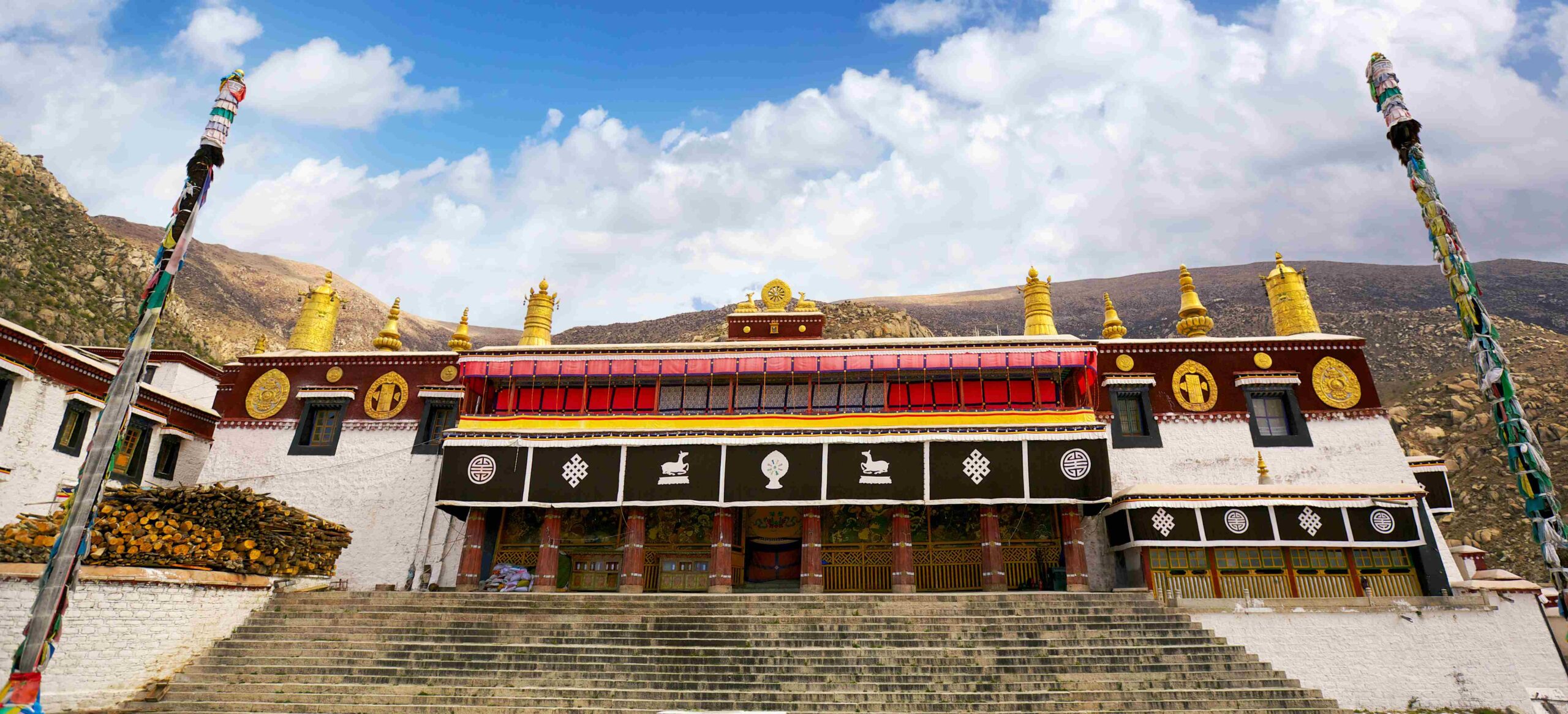
Drepung Monastery.
Frequently Asked Questions
-
What is the best time to visit Drepung Monastery?
The best times to visit Drepung Monastery are during the shoulder months of spring (April to June) and autumn (September to October). During these periods, the weather is mild, making it comfortable for exploration. Summer months can be crowded, while winter offers a quieter experience. -
How do I get to Drepung Monastery from Lhasa?
Drepung Monastery is located approximately five kilometers from downtown Lhasa. You can reach it by taxi, which takes about 15-20 minutes, or you can opt for a local bus if you prefer public transportation. Many guided tours also include transportation to the monastery. -
Are there any entry fees for Drepung Monastery?
Yes, there is a small entrance fee to visit Drepung Monastery. The fee helps maintain the site and its facilities. It’s advisable to check for any updates on fees before your visit. -
What should I wear when visiting the monastery?
Dress modestly and respectfully when visiting Drepung Monastery, as it is a sacred site. Comfortable walking shoes are recommended due to the uneven terrain. Layers are also a good idea, as temperatures can fluctuate throughout the day. -
Can I take photographs inside the monastery?
Photography is generally allowed in most areas of Drepung Monastery, but be respectful of the local customs and avoid taking photos of monks during their prayers or rituals. Some areas may have restrictions, so always check for signage or ask for permission if unsure. -
Is it necessary to acclimatize before visiting Drepung Monastery?
Yes, it’s crucial to acclimatize to the high altitude of Lhasa (over 3,600 meters) before visiting Drepung Monastery. Spend a couple of days in Lhasa to adjust and hydrate properly to avoid altitude sickness. -
What can I expect to see at Drepung Monastery?
Visitors can expect to see stunning Buddhist architecture, important religious artifacts, and vibrant murals. Don’t miss the Coqen Hall, Ganden Palace, and the famous thangka unfurling during the Shoton Festival if you’re visiting in August. -
Are there guided tours available at Drepung Monastery?
Yes, many local tour companies offer guided tours of Drepung Monastery, which can provide valuable insights into its history, architecture, and significance in Tibetan Buddhism. A guided tour can enrich your experience and help you navigate the sprawling complex.
Final Thoughts on Your Trip
As you reflect on your journey to Drepung Monastery, you carry with you not just the memories of breathtaking architecture and sacred rituals, but also a deeper appreciation for the rich tapestry of Tibetan Buddhism and culture. This awe-inspiring site, nestled against the majestic backdrop of the Gambo Utse Mountain, offers a unique glimpse into a world where spirituality and community thrive in harmony.
Whether you found peace in the tranquil kora circuit, marveled at the vibrant thangka unfurling during the Shoton Festival, or engaged in the spirited debates of the monks, each experience at Drepung has woven itself into the fabric of your travels. These moments resonate beyond the walls of the monastery, reminding us of the universal quest for understanding and enlightenment.
As you prepare to leave this sacred space, take a piece of Drepung with you—its serenity, wisdom, and the warmth of its people. Let it inspire you to seek connections wherever you go, to embrace the diverse cultures of our world, and to cherish the moments that bring us closer to ourselves and to one another. Until your next adventure, may the spirit of Drepung guide you on your path.